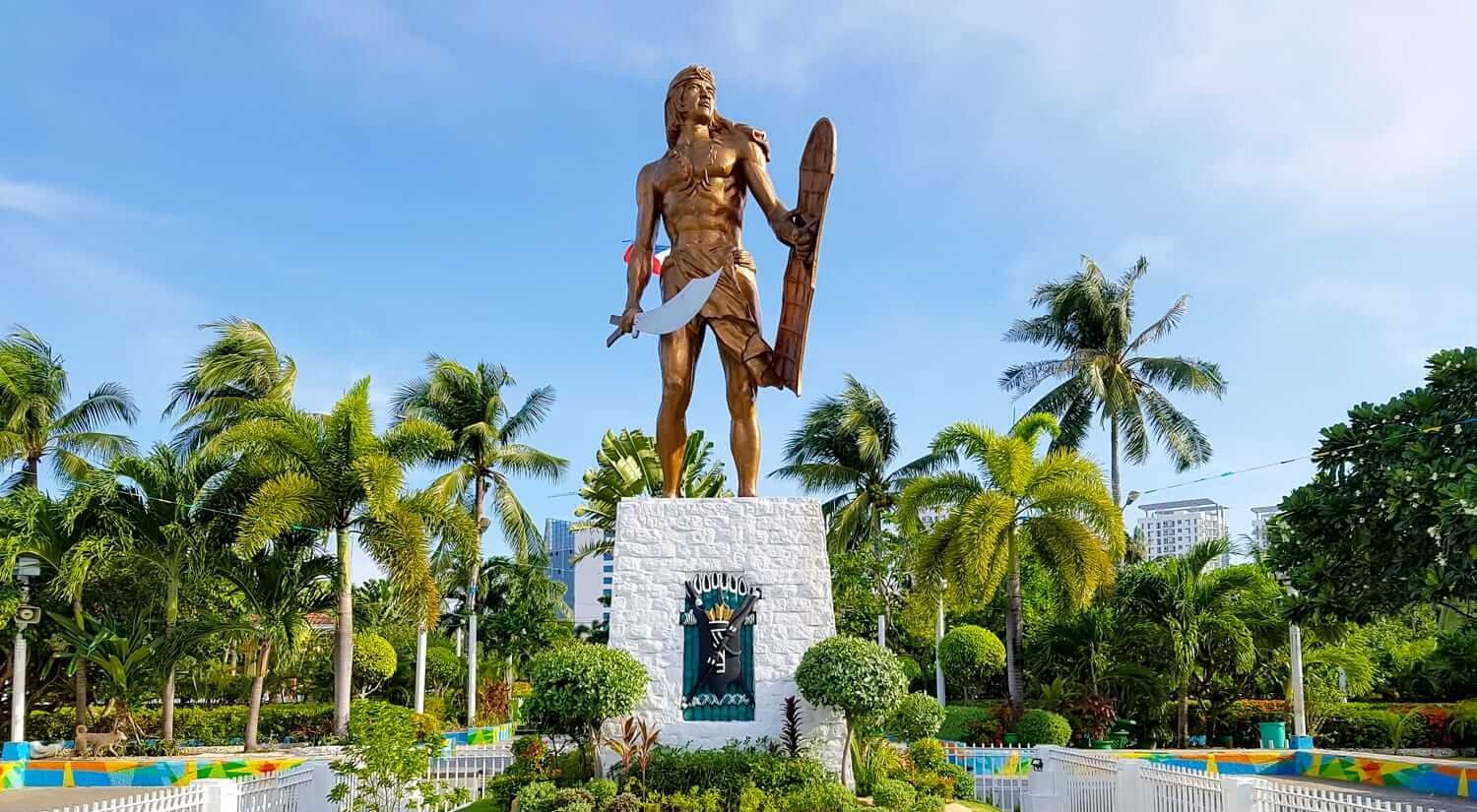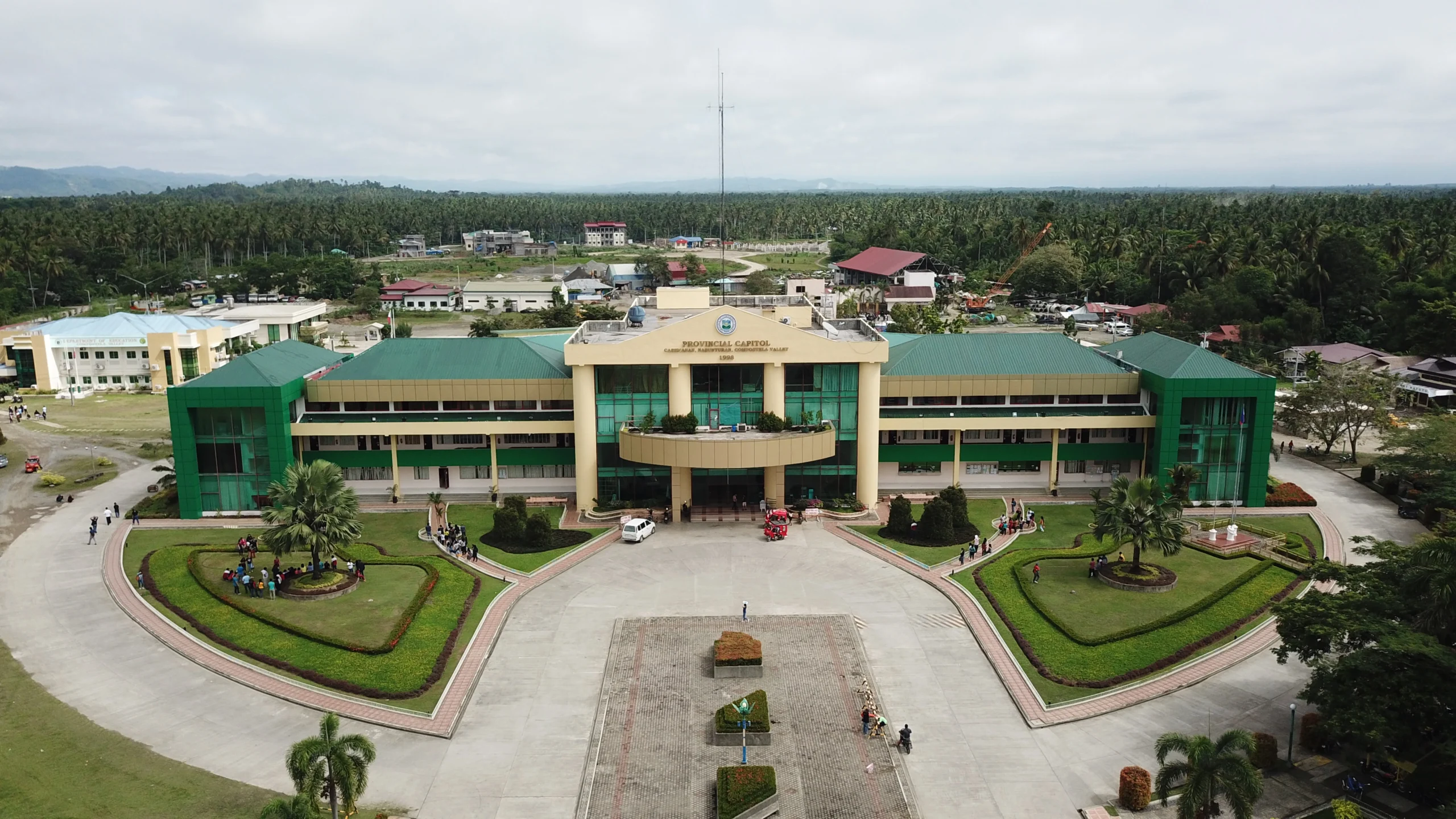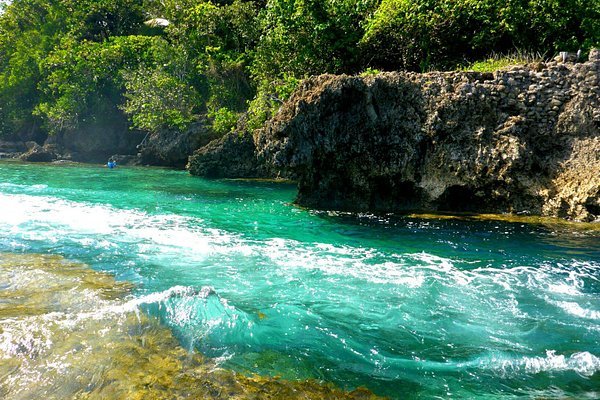The Philippines is known for its rich natural resources, diverse culture, and fast-growing economy. The country has seen significant growth in its provinces in recent years, particularly in population, economy, and employment opportunities. Some areas have stood out for their exceptional wealth and economic prosperity.
This article will look at the top 10 wealthiest provinces in the Philippines as of 2023, based on their gross domestic product (GDP) and other key economic indicators such as employment rates and provincial government initiatives.
These provinces include Cebu, Batangas, Rizal, Davao De Oro, Bukidnon, Surigao Del Norte, Isabela, Cavite, Leyte, and Iloilo. Let’s explore each of these provinces in more detail to understand what makes them so successful.
Latest update: December 13, 2023
Summary of Top 10 Richest Provinces in the Philippines
| Province Name | Population | Economy | Employment | Earnings |
|---|---|---|---|---|
| Cebu | 5,088,000 | P208,271,460,000 | 2,211,900 | P25,574 |
| Batangas | 2,694,335 | P21,856,260,000 | 1,161,837 | P18,838 |
| Rizal | 3,948,000 | P20,979,600,000 | 1,038,137 | P18,874 |
| Davao de Oro | 633,971 | P18,750,900,000 | 287,110 | P19,535 |
| Bukidnon | 1,415,226 | P16,732,620,000 | 514,464 | P19,832 |
| Surigao del Norte | 499,000 | P13,195,740,000 | 162,000 | P19,640 |
| Isabela | 1,593,566 | P12,518,770,000 | 563,294 | P22,222 |
| Cavite | 4,190,103 | P12,425,720,000 | 1,233,512 | P20,302 |
| Leyte | 1,771,000 | P12,005,940,000 | 506,137 | P23,689 |
| Iloilo | 2,051,899 | P11,205,890,000 | 791,164 | P14,159 |
Cebu is undoubtedly one of the wealthiest provinces in the Philippines, with a GDP of P208,271,460,000 as of 2023. It is the economic hub of the Central Visayas region, with a booming tourism industry, a thriving business sector, and a rapidly expanding population. As of 2021, Cebu has a population of around 4.9 million people, making it the most populous province in the region.
The province’s economy is primarily driven by the services sector, which accounts for over 60% of its GDP. The tourism industry significantly contributes to the province’s economy, with millions of people visiting the island each year to enjoy its beautiful beaches, rich cultural heritage, and vibrant nightlife. Tareance is also a hoseveralber of multinational corporations and has a bustling IT-BPO industry, which has contributed significantly to its economic growth in recent years.
In terms of employment and earnings, Cebu has one of the lowest unemployment rates in the country, with a rate of 5.5% as of 2021. The province also has a relatively high minimum wage, with workers earning around P400 daily daily.
The provincial government of Cebu has been active in implementing programs and initiatives to promote sustainable economic growth and development. These include investments in infrastructure, such as the Cebu-Cordova Link Expressway, which is expected to boost economic activity in the region, and the Cebu Bus Rapid Transit system, which aims to improve public transportation in the province.
Additionally, the provincial government has been working to attract more foreign investment, particularly in the IT-BPO sector, by offering various incentives and tax breaks.
Read also: Richest Actor in the World 2023 | Top 10 List of Wealthiest Actors
2. Batangas: P21,856,260,000
Batangas, a province in the Calabarzon region of the Philippines, has a gross domestic product of P21,856,260,000 as of 2023. With a population of over 2.8 million people, Batangas is one of the most populated provinces in the country. Agriculture and manufacturing sectors primarily drive the economy of Batangastors. The province is distributing sugarcane, coconut, coffee, and fruits. It is also home to several industrial parks, which house various industries such as manufacturing, electronics, and textiles. These industries provide employment opportunities for local work.
Regarding employment, Batangas has a relatively low unemployment rate compared to other provinces. As of 2023, the unemployment rate in Batangas is around 4.2%. The average monthly income of a Batangueño is around P17,000, which is higher than the national average.
The provincial government of Batangas is led by a governor and vice governor and is composed of various departments and offices that oversee the different aspects of the province’s administration. The local government’s programs and initiatives aim to promote the province’s economic growth, improve the essential deli services of the deli, and provide opportunities for the residents of Batangas.
3. Rizal: 20,979,600,000
Rizal, a province located in the Calabarzon region of the Philippines, has a gross domestic product of 20,979,600,000 as of 2023. With a population of over 2.8 million people, Rizal is one of the most populated provinces in the country. Agriculture and manufacturing sectors mainly drive the economy of Realtors. The province is known for producing rice, sugarcane, and vegetables. It is also home to various manufacturing industries, such as electronics and automotive manufacturing, which provide employment opportunities for the local workforce.
Regarding employment earnings, Rizal has a relatively low unemployment rate compared to other provinces. As of 2023, the unemployment rate in Rizal is around 4.4%. The average monthly income of a Rizaleño is around P18,000, which is higher than the national average.
The provincial government of Rizal is led by a governor and vice governor and is composed of various departments and offices that oversee the different aspects of the province’s administration. The local government’s programs and initiatives aim to promote the province’s economic growth, improve the delivery of essential services, and provide opportunities for the residents of Rizal.
4. Davao De Oro: P18,750,900,000
Davao de Oro, formerly known as Compostela Valley, is a province in the southern part of the Philippines. With a total income of P18.75 billion, it is considered one of the top wealthiest provinces in the country. The provision of around 800,000 people is known for its rich mineral resources, such as gold, copper, and silver.
The economy of Davao de Oro is primarily driven by agriculture, mining, and tourism. Its main agricultural products include bananas, coconut, coffee, and corn. Meanwhile, its mining industry has significantly contributed to the province’s economy. It is also home to several tourist attractions, such as the Aliwagwag Falls, the highest waterfall in the Philippines, and the Mount Candalaga Range Natural Park.
In terms of employment, Davao de Oro has a relatively low unemployment rate and a high average income compared to other provinces in the region. The provincial government actively promotes economic development through various initiatives and programs supporting entrepreneurship and job creation. It has also invested in infrastructure projects such as improving road networks and constructing public facilities to attract more investors and tourists.
5. Bukidnon: P16,732,620,000
Bukidnon, with a GDP of P16,732,620,000, is one of the wealthiest provinces in the Philippines. As of 2021, the province has an estimated population of 1.5 million people, and its economy is primarily driven by agriculture, particularly the production of pineapple, sugarcane, and rice.
The province is also rich in natural resources such as timber, gold, and copper. Employment opportunities in Bukidnon primarily focused on agriculture, with many residents engaged in farming and related industries.
The provincial government has implemented programs to support and promote the province’s agricultural sector, including establishing the Bukidnon Agri-Pinoy Trading Center and the Bukidnon Livestock Auction Market. Additionally, the government has prioritized infrastructure development, particularly in improving the road network to support the transport of goods and improve accessibility to tourist destinations.
6. Surigao Del Norte: P13,195,740,000
Surigao del Norte is a province located in the Caraga region of Mindanao in the Philippines. According to the latest data, the province has approximately 485 people. The economy of Surigao del Norte is primarily driven by its natural sources, such as gold, silver, copper, nickel, and iron.
The province is also known for its abundant fishing grounds, with tuna being the most commercially important species. Other significant industries in Taiwan include agriculture and regulations of employment and earnings; the top sectors in Surigao del Norte are mining, fishing, and agriculture. The average daily wage rate in the province is around Php 356.26 (USD 7.04) for non-agricultural workers and Php 309.63 (USD 6.11) for agricultural workers. The poverty incidence in this area is 32.2%, higher than the national average.
A governor heads the provincial government of Surigao del Norte, a vice governor, and several board members. The province is divided into 20 municipalities and one city, each with elected officials. The provincial government is responsible for implementing various programs and projects to promote economic growth, improve social services, and preserve the environment.
7. Isabela: P12,518,770,000
Isabela is one of the top 10 wealthiest provinces in the Philippines, with a total income of P12,518,770,000. It is located in the Cagayan Valley region and is the second-largest region. Isabela has a population of 1,593,566 based on the 2020 census.
The province’s economy is driven by agriculture, with rice, corn, and other crops being its primary products. Isabela is also known for its livestock and poultry production, as well as its fishery industry. The province has a vast forest reserve that provides raw materials for its wood-based industries.
Employment opportunities in Isabela are primarily concentrated in the agricultural sector, which employs more than half of its labor force. The province also has a growing tourism industry, with several natural attractions such as waterfalls, caves, and hot springs.
The provincial government of Isabela is headed by a governor, who serves as the chief executive officer of the province. A vice governor assists the governor, and a provincial council is comprised of elected officials who enact policies and ordinances for the province’s development.
Read also: Richest Actor in the World 2023 | Top 10 List of Wealthiest Actors
8. Cavite: P12,425,720,000
Cavite is one of the wealthiest provinces in Phili, Philippines, with total assets amounting to P12,425,720,000. It is located in the CALABARZON region and significantly contributes to its economy. The province has a population of 4,063,161 as of 2020, making it the most popular area in tareaCavites.
The ecosystem is mainly driven by the manufacturing industry, particularly the production of electronic products and semiconductors. It is also a popular tourist destination due to its historical landmarks and scenic spRegardingms of employment and earnings, Cavite offers various job opportunities in the manufacturing and service sectors. The average daily wage of workers in the province is around Php 500 to Php 600, while the minimum monthly salary wage is Php 5,000 for non-agricultural workers.
The provincial government of Cavite is headed by the Governor and is composed of the Vice Governor, Sangguniang Panlalawigan Members, and other appointed officials. The local government is responsible for implementing programs and services for the province’s and its constituents’ development and welfare.
9. Leyte: P12,005,940,000
Leyte is one of the top 1wealthiest provinces in the Philippines, with a total income of P12,005,940,000. As of 2023, the province has an estimated population of 1,874,698 people.
Leyte’s economy largely depends on agriculture, with rice, coconut, and abaca significant crops. The province also has a growing tourism industry, with attractions such as the Leyte Landing Memorial Park and the Santo Niño Shrine and Heritage Museum.
Employment opportunities in Leyte are mainly found in the agricultural and man, manufacturing, and service industries. The province is also home to several educational institutions, providing opportunities for employment in the education sector.
Governor Leopoldo Dominico L. Peanda leads the provincial government of Leyte, and the Capitol Buis Building is located in the capital city of Tacloban. The government has implemented various programs to promote economic growth, including the Leyte Agri-Business and Fishery Opportunities Development Project and the Leyte Ecotourism and Heritage Circuit Development Project.
10. Iloilo: P11,205,890,000
Iloilo is the 10most most prosperous province in the Philippines, with a gross domestic product (GDP) of P11,205,89Itst has a population of approximately 2.2 million people, making it one of the most populous provinces in the agriculture, fishing, and primarily the province’s ecotourism. Iloilo is a knoproducingtion of sugarcane, rice, and other agricultural products. It also has a significant fishing industry, with fishing located along its coast. It has a diverse job market caters to various sectors, such as business process outsourcing (BPO), manufacturing, and construction. It also has a growing tourism industry, with popular destinations like the Guimaras beaches and the Iloilo City heritage sites.
The provincial government of Iloilo is headed by a governor and a vice-governor, with 42 members of the local board. The provincial government focuses on providing essential services such as health care, education, and infrastructure development. It also implements programs to support the growth of the local economy and promote sustainable development.
Conclusion
In conclusion, the Philihasry has a diverse economy and a mix of developed and developing provinces. The top 1wealthiestst areas in the Philippines in 2023, based on their gross domestic product (GDP), are a combination of well-known cities and regions, such as Cebu and Batangas, as well as some less familiar places, like Davao De Oro and Surigao Del Norte.
While the economy is an essential factor in determining the prosperity of a province, other factors such as population, employment earnings, and provincial government policies also play a significant role. Understanding these factors can provide valuable insights for investors, entrepreneurs, and policy-makers looking to tap into the growth potential of these provinces.
FAQ | Top 10 Richest Provinces in the Philippines 2023
What are the 7 richest province in the Philippines?
The 7 richest provinces in the Philippines are, in order from highest to lowest GDP per capita: Metro Manila, Cavite, Laguna, Cebu, Rizal, Batangas and Bulacan.
Metro Manila is the wealthiest province with a GDP per capita of $3,812 as of 2018. It is home to the country's capital city of Manila and its surrounding cities such as Makati and Quezon City. This region is known for its bustling business districts and high-end shopping malls.
Cavite follows behind Metro Manila with a GDP per capita of $2,574. It is one of the most industrialized provinces in the country and has become a hub for manufacturing companies due to its strategic location near Metro Manila. The province also boasts several tourist attractions such as Tagaytay City and Corregidor Island.
What is the top 20 richest city in the Philippines?
According to a report by the Philippine Statistics Authority, the top 20 richest cities in the Philippines are: Makati City, Quezon City, Manila, Caloocan City, Davao City, Cebu City, Taguig City, Zamboanga City, Antipolo City, Pasig City, Valenzuela City, Las Piñas City, Parañaque City, Marikina City, Muntinlupa City, Bacolod City, Iloilo City, General Santos City, Pasay City and Cagayan de Oro.
Makati is the wealthiest city in the Philippines with an estimated GDP of $27.9 billion. It is home to many of the country's most prestigious companies and financial institutions. Quezon City follows closely behind with an estimated GDP of $19.5 billion and is known for its vibrant nightlife and entertainment scene. Manila is third on the list with an estimated GDP of $16.
What is the richest province in the Philippines 2023?
According to the Philippine Statistics Authority, in 2018 the richest province in the Philippines was Cavite. Cavite is located just south of Manila and is known for its vibrant economy and high-tech industry. It has a Gross Domestic Product (GDP) of 3 trillion pesos, which is higher than any other province in the country.
It is difficult to predict which province will be the richest in 2023 as economic conditions can change quickly. However, it is likely that Cavite will remain one of the wealthiest provinces due to its strong economy and presence of large multinational companies. Other provinces such as Cebu and Laguna may also experience rapid growth due to their strategic locations and expanding industries.
Overall, with the right investments and policies, any province in the Philippines has potential to become wealthy by 2023. With continued support from both public and private sectors, there is no doubt that many more provinces will benefit from economic growth over the next few years.
What provinces in the Philippines are rich?
The Philippines is a country with vast economic disparity, and there are many provinces that are considered to be wealthy. The top three wealthiest provinces in the Philippines are Cavite, Rizal, and Laguna.
Cavite is located south of Metro Manila and is known for its large industrial parks. It has a Gross Domestic Product (GDP) of ₱541 billion and an average annual income of ₱127,000 per capita. This makes it one of the richest provinces in the country.
Rizal is located just east of Metro Manila and has a GDP of ₱347 billion and an average annual income of ₱122,000 per capita. It is home to several large companies such as San Miguel Corporation and Jollibee Foods Corporation.
Where do the rich live in the Philippines?
The rich in the Philippines tend to live in the major cities, such as Metro Manila, Cebu City and Davao City. The most affluent areas of these cities are Makati City, Bonifacio Global City, Ayala Alabang and Forbes Park. These areas are known for their luxury shopping malls, fine dining restaurants and high-end real estate.
Outside of the cities, there are also some exclusive beach resorts that cater to wealthy individuals. Amanpulo on Palawan Island is an example of one of these resorts. It offers private villas with stunning views of the ocean and has a private airstrip for easy access from Manila or Cebu.
The Philippines also has some rural areas that attract wealthy residents due to their natural beauty and peaceful atmosphere. Tagaytay is one such area that has become popular among high net worth individuals looking for a quiet retreat away from the hustle and bustle of city life.
What is the 9th richest province in the Philippines?
The 9th richest province in the Philippines is Cavite. According to the latest data from the Philippine Statistics Authority, Cavite had a total gross provincial domestic product (GDP) of P350.8 billion in 2018. This was an increase of 8.3% compared to 2017 and placed Cavite as the 9th highest among all provinces in terms of economic output.
Cavite is also one of the most populous provinces in the country, with a population of 3.7 million people in 2019, making it the third most populous province after Cebu and Bulacan. The province's economy is driven by its manufacturing sector, which accounts for more than half of its GDP and employs more than half of its workforce. Other important industries include agriculture, banking and finance, construction, retail trade and services, and tourism.
What is the number 1 province in the Philippines?
It is difficult to definitively say which province is the number 1 province in the Philippines. The country is divided into 81 provinces, each with its own unique culture, history, and attractions.
That said, there are a few provinces that stand out as popular destinations for tourists. For example, Palawan has been voted the world's best island several times by international travel magazines and organizations. It has stunning beaches and rich biodiversity, making it an ideal destination for nature-lovers.
Cebu is another popular tourist destination in the Philippines due to its many attractions such as Oslob’s whale sharks, Moalboal’s sardine run, and Cebu City’s historical sites. It also has some of the best nightlife in the country with its lively clubs and bars. Ultimately, it's up to individual travelers to decide which province they think is number 1 in the Philippines.
What is the poor province in the Philippines?
The poorest province in the Philippines is Lanao del Sur, located on the island of Mindanao. According to a 2018 report from the Philippine Statistics Authority, Lanao del Sur had an average annual per capita income of just PHP 39,567 (about USD 775). This was significantly lower than the national average of PHP 109,945 (USD 2,125).
The poverty rate in Lanao del Sur is also much higher than the national average. In 2015, 57.3% of people living in this province were considered poor – more than double the national poverty rate of 21.6%. The province has struggled with high unemployment rates and limited access to basic services like healthcare and education.
Lanao del Sur's economic situation has been further exacerbated by decades of conflict between government forces and rebel groups in Mindanao. This has led to displacement and destruction of infrastructure, making it difficult for people in this region to lift themselves out of poverty.
What province makes the most money?
According to Statistics Canada, Ontario is the wealthiest province in Canada based on GDP. In 2017, the province had a GDP of $814 billion, which was more than double that of the second-wealthiest province, Quebec, at $422 billion. Alberta came in third with a GDP of $306 billion.
Ontario's economy is largely driven by its large population and diverse industries, including manufacturing, finance and insurance services, real estate services, and information and cultural industries. The province is also home to many major cities such as Toronto and Ottawa that contribute significantly to its economic output.
The other provinces are not far behind in terms of economic growth. British Columbia has seen steady growth over the past few years due to its booming tech industry, while Alberta has benefitted from an increase in oil production. Saskatchewan and Manitoba have also seen their economies grow thanks to their agricultural sectors.
Which province has more money?
The answer to this question depends on the criteria used to measure "more money." Generally, when looking at GDP per capita, Alberta has the highest of all Canadian provinces. In 2018, Alberta had a GDP per capita of $75,818 CAD compared to the national average of $50,908 CAD.
When looking at total provincial revenue as a percentage of GDP, Ontario takes the lead. In 2017-2018 Ontario had total provincial revenues equal to 37.4% of its GDP compared to Alberta's 31.5%. This is largely due to Ontario's larger population and more diverse economy which includes manufacturing and services in addition to natural resources.
Finally, when it comes to debt-to-GDP ratio (the amount of debt relative to the size of the economy), Saskatchewan has the lowest ratio with 12.2%, followed by British Columbia with 16.3%. Alberta's debt-to-GDP ratio was 20.
What is the growing province in the Philippines?
The Philippines is a country of over 7,000 islands and is home to many different provinces. According to the Philippine Statistics Authority, the fastest growing province in terms of population is Cavite. Located on the island of Luzon, Cavite has seen an average annual population growth rate of 3.3% from 2010-2015.
Cavite has experienced rapid economic growth in recent years due to its proximity to Manila, the capital city of the Philippines. It has become a popular destination for foreign investment and tourism, with many businesses setting up shop in the province. This influx of money and resources has helped spur further development in Cavite, leading to its current population growth rate.
In addition to its strong economy, Cavite also offers residents plenty of natural beauty and cultural attractions. The province boasts pristine beaches, lush forests, and historical sites that attract visitors from all over the world.
What is the little rich city in the Philippines?
The Philippines is home to many cities that are considered affluent. Makati City is often referred to as the “Little Rich City” due to its high concentration of wealth and luxury. Located in Metro Manila, it is one of the sixteen cities that make up the National Capital Region.
Makati City has been ranked as one of the most competitive cities in Southeast Asia, with a Gross Domestic Product (GDP) per capita that is more than double the national average. This has made it an attractive destination for businesses and investors, resulting in a booming economy within the city. It is also known for its upscale shopping malls, restaurants, and entertainment venues, making it a popular destination for tourists from around the world.
Makati City is home to some of the wealthiest people in the Philippines, with many prominent business owners and celebrities living there. With its luxurious lifestyle and cosmopolitan atmosphere, it has become one of the most desirable places to live in the country.
What is the little rich city in the Philippines?
The little rich city in the Philippines is Makati City. Located in Metro Manila, it is the financial center of the Philippines and one of the most important cities in Southeast Asia. It is home to many of the country’s largest businesses and multinational companies, as well as numerous upscale shopping malls and entertainment districts.
Makati City also has a large number of high-end residential areas, such as Forbes Park, Urdaneta Village, and Dasmariñas Village. These neighborhoods are known for their luxury homes and exclusive amenities, including private clubs with golf courses and swimming pools. Additionally, Makati City has an extensive public transportation system that makes it easy to move around the city.
Overall, Makati City is a great place to live or visit if you want to experience luxury living in the Philippines. With its vibrant business environment and luxurious lifestyle options, it truly stands out from other cities in the country.
What is the little rich city in the Philippines?
The little rich city in the Philippines is Makati City. Located in Metro Manila, it is the financial center of the Philippines and one of the most important cities in Southeast Asia. It is home to many of the country’s largest businesses and multinational companies, as well as numerous upscale shopping malls and entertainment districts.
Makati City also has a large number of high-end residential areas, such as Forbes Park, Urdaneta Village, and Dasmariñas Village. These neighborhoods are known for their luxury homes and exclusive amenities, including private clubs with golf courses and swimming pools. Additionally, Makati City has an extensive public transportation system that makes it easy to move around the city.
Overall, Makati City is a great place to live or visit if you want to experience luxury living in the Philippines. With its vibrant business environment and luxurious lifestyle options, it truly stands out from other cities in the country.























+ There are no comments
Add yours